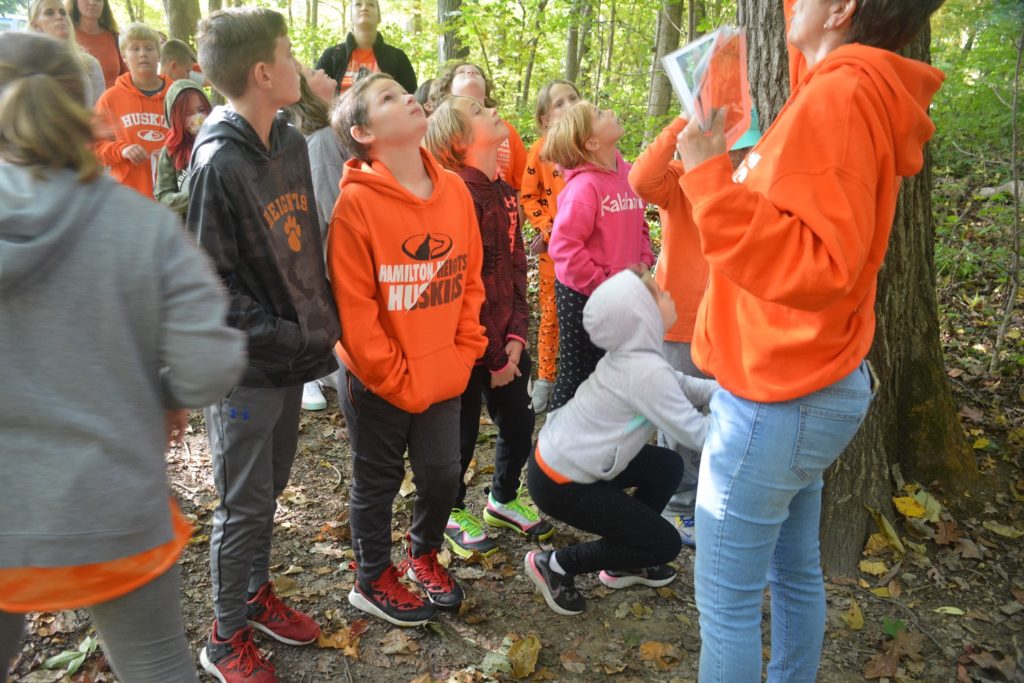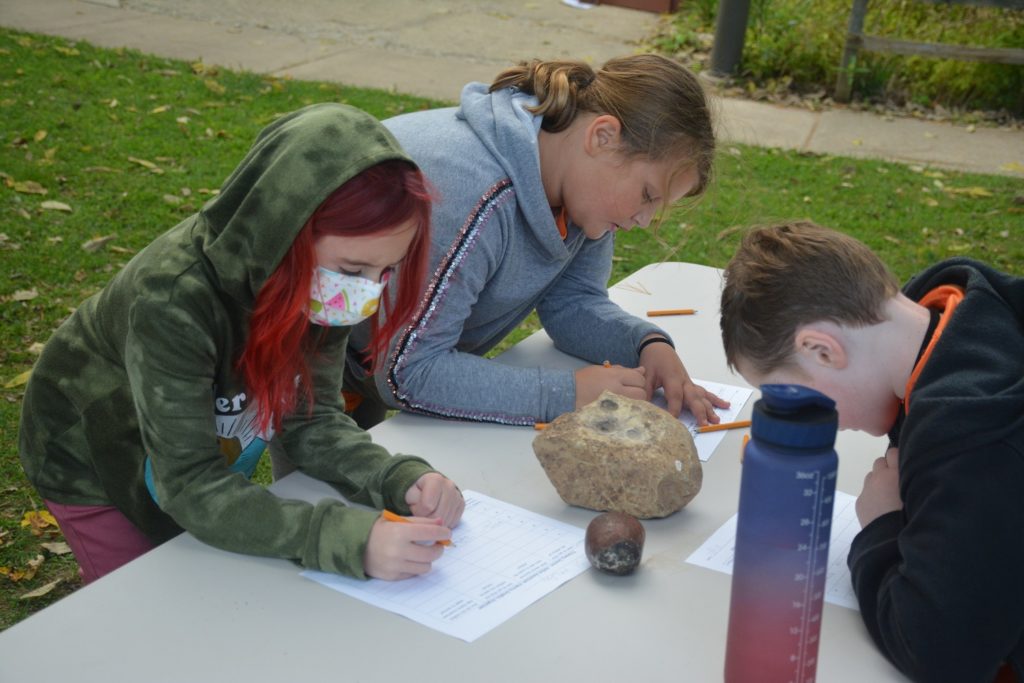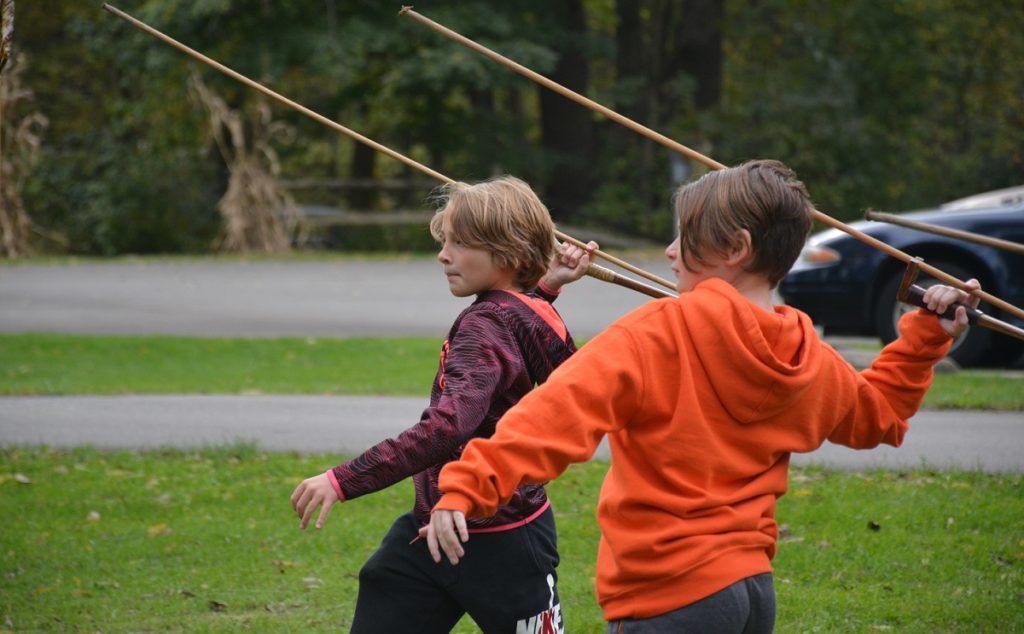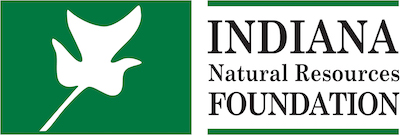Students Discover the Outdoors at Mounds State Park

In October, we funded an outdoor field trip to Mounds State Park through the Discover the Outdoors grant. Mounds is a popular field trip destination due to its rich cultural heritage. The park gets its name from earthworks that were built by an ancient civilization of Native Americans first known as the Adena and later called the Hopewell.
Mounds was an ideal location for the fourth graders of Hamilton Heights Elementary because it is close to their school, and its story fits with the subject matter they were studying.
The day began with a guided tour of the Great Mound, the largest earthwork on park grounds, which is believed to have been constructed around 160 B.C. While it is still unknown what the purpose of the mounds was in 160 B.C., it is speculated that they were used for religious ceremonies and gatherings.

Students read historical information at the site of the Great Mound.
The students also learned about the Fiddle Back Mound, the third largest on the property, which served as a midden pile. Archaeologists were able to learn much of what they know about the Adena and Hopewell cultures by digging up their refuse, such as broken pottery and animal bones.
The next activity for the day was a guided survival hike through a wooded trail. The students learned about which nuts, berries, and plants are edible, as well as what to avoid when spending time in the outdoors. They inspected acorns and mushrooms and learned about how to identify different types of trees by examining the leaves.
“What if we didn’t get jobs when we grow up, and we just got land and survived,” one girl said to her classmate.

Students learn how to identify trees at Mounds State Park.
These are important questions for schoolchildren to think about. Connecting to the natural world around them and learning about how their ancestors survived and how they can survive in the outdoors are worthy things to ponder.
After their lunch break, the fourth graders broke into teams to study archaeological artifacts and make guesses about each item’s purpose. They observed items from ancient cooking utensils to weapons. At the end of their guessing game, Kelley Morgan, interpretive naturalist at the park, explained each artifact’s purpose and how the people used them in their everyday lives.
“The past can be such an abstract concept for children learning about history,” Morgan said. “Bringing the past to life, letting them handle real artifacts, and making them consider that life has more dimensions than what they read about on the page is so important to their understanding of how our culture today will be seen in the future.”

The final portion of the field trip was probably the kids’ favorite—throwing dart-tipped spears at a target using a device known as an atlatl. They learned safe handling and proper use of the device that would have been used by the Adena and Hopewell.
After the instruction, they threw their darts. Each child took several turns, and the sounds of their excitement as they threw the darts echoed through the park. The teachers and parents in attendance took turns as well.

As the field trip ended, a group of kids was asked what they learned that day.
Several kids mentioned they learned how to survive in the wild. Others said they enjoyed learning about how the Adena-Hopewell people lived more 2,000 years ago.
Learning in a hands-on environment in the outdoors is valuable. Showing a child a photo or an illustration of a mushroom or acorn in a book is useful, but it cannot replace the experience of seeing, smelling and feeling nature. That is why we raise funds for Discover the Outdoors.
Discover the Outdoors, offered in partnership with Indiana State Parks, encourages public, private, parochial, and home school educators to engage students on field trips to an Indiana state park or reservoir. Educators work directly with park staff to develop a curriculum that benefits each student. Naturalists lead students on adventures to explore nature centers, caves, forests, rivers, lakes, and other natural and cultural areas throughout Indiana.
We can fund these field trips and more thanks to our generous donors. Please donate today and show the next generation that learning in the outdoors is important.
